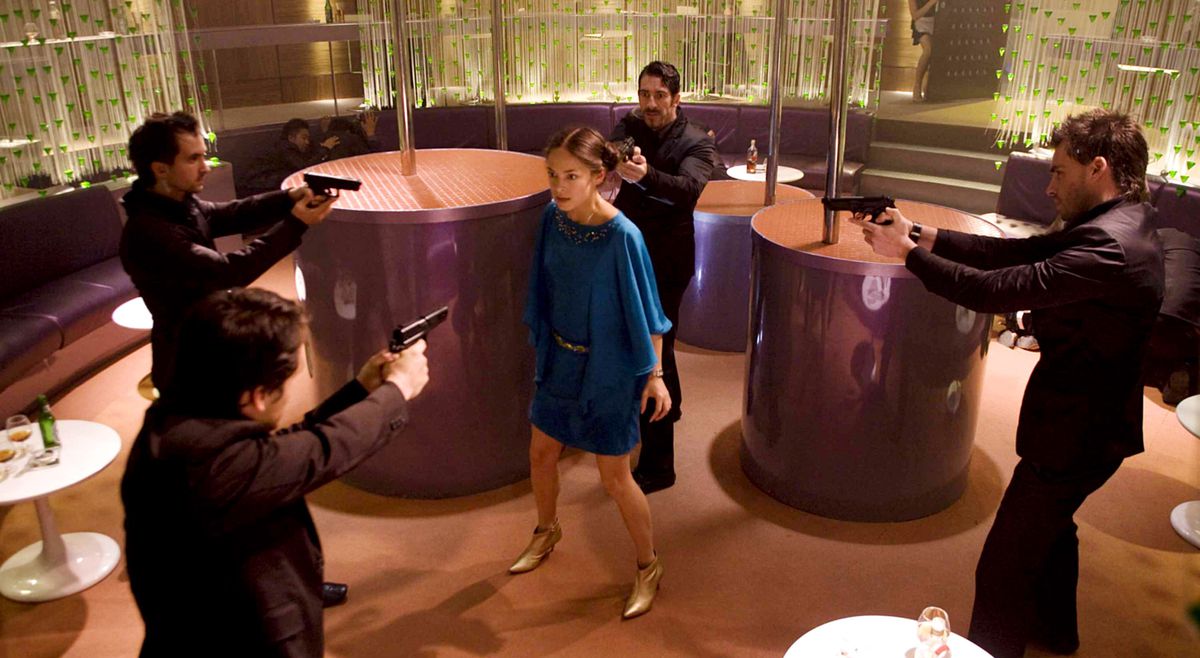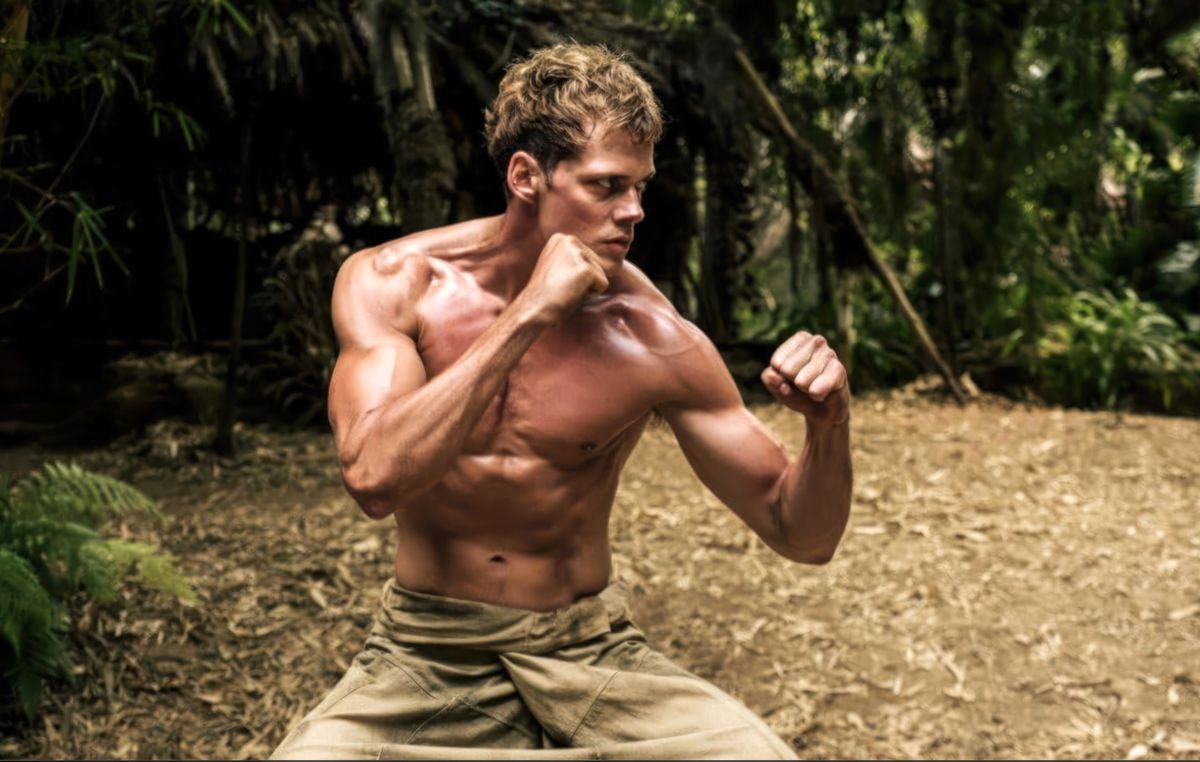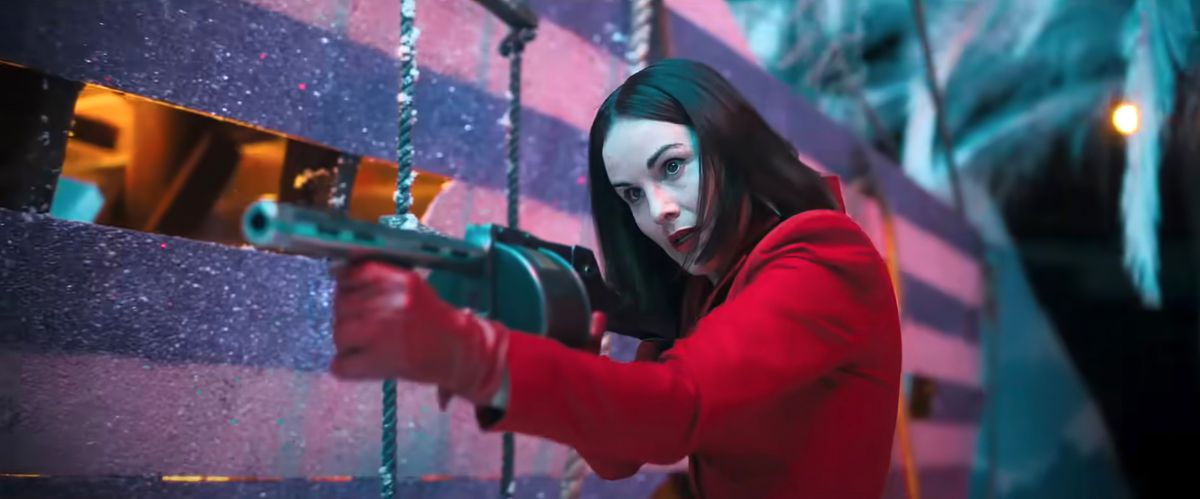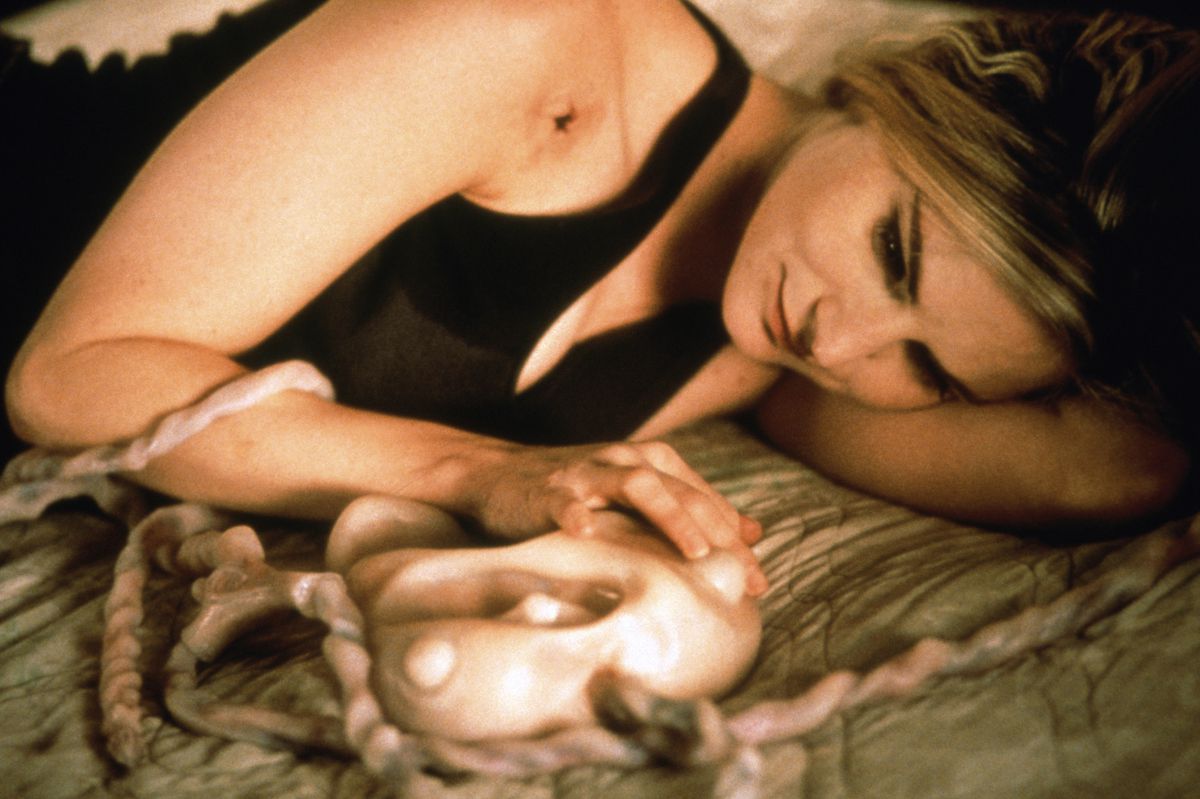For most of their brief history, video game movies have been laughed at by fans and movie enthusiasts alike. Recent TV megahits like The Last of Us and Prime Video’s Fallout prove video games can be effectively adapted as TV shows, but video game movies mostly remain a blotchy chimera. From the neck down, they sport the lumps and limbs of action movies. But these films’ brains are merged with the source material. When a video game movie like the lackluster Street Fighter: The Legend of Chun-Li confuses the original’s story or gets its ineffable vibe wrong, the whole thing collapses under its own weight. The catalyst for this failure, usually, is the specific way video game movies depend on violence: It’s hardly ever the right kind.
The filmmakers behind video game movies tend to act like nervous parents, peeking through their fingers at Call of Duty snipers and Mortal Kombat beheadings, guessing that all video games are essentially blood-and-guts time bombs. Assuming that all players want from games-turned-movies is to witness destruction, directors lean on impressive stunts and gore to make their movies. But they miss that the most successful video game violence is thoughtful, too.

Cinema knows violence well. Even films from the birth of the medium could make audiences sweat, showcasing train robbers with polite-looking pistols that still seemed menacing on screen. Artificial violence, scientists think, provides us with safe, pleasurable adrenaline hits, and filmmakers have spent a century satisfying that innate craving for thrills. After a century of trial and error, perfecting tension and fake blood, we’re left with a modern movie landscape dominated by Marvel movies and expert action directors like Christopher Nolan, Quentin Tarantino, the Wachowskis, and John Woo. They serve up glass-shattering fight sequences as nonchalantly as baby food.
This landscape produces tons of video game films like The Super Mario Bros. Movie and 2016’s totally forgettable Assassin’s Creed, which feature notable fight sequences, but remove them so far from the worlds they take place in, they might as well be free-floating meteors. I’m thinking of 2022’s perplexing Uncharted, which disappointed fans with its nonchalance toward the franchise’s usual zeal for history and mystery, but sends a vintage Mercedes barrelling out of a plane in an attempt to compensate. 2023’s Five Nights at Freddy’s likewise forgoes the series’ trademark jump-scares and Chuck E. Cheese psychological horror. In their place, it offers a girl getting chomped in half, though the games rarely ever show blood.
In games, fights do often function as plot benchmarks. But a video game fight can shine even without any context if it offers worthwhile imagery, immersion, or mechanics. The fighting-game genre offers the best examples — no one is forcing their roommate into another round of Super Smash Bros. Ultimate praying that it’ll finally reveal Villager and Dark Pit’s romantic tension. They’re playing Smash because its controls are rewarding, or because it offers a skill to master, and there are a million ways to bodyslam to victory.

But video game movies need meaningful story framing for those same battles. The recent underwhelming video game thriller Boy Kills World is a useful example — its world-building is minimal, and its justification for its many fight scenes is sparse. That isn’t satisfying because we can’t interact with them. It’s impossible to separate a movie fight from its context — unlike a single Mortal Kombat match or a wrathful Elden Ring field boss, a movie fight needs the 90 minutes around it to be valuable. Movie-watching is inherently passive, and an absorbing one needs stakes, and a way to get the audience invested quickly.
So though Boy Kills World’s fight scenes are incredible — one brutal dining-room fight, amid red lobsters and pink macarons, is practically operatic — they don’t stop the film from feeling insubstantial.
The core of the film is intelligible enough: Boy (Bill Skarsgård) wants vengeance against despot Hilda Van Der Koy (Famke Janssen) and her equally evil family, who rule his jumbled Southeast Asian/Grecian/Borderlands jungle/slum/Resident Evil country through brutality and murder. Boy was mutilated in his youth, with hot pokers forced into his ears and his tongue snipped out, and he’s forgotten the sound of his own voice. His inner monologue (courtesy of H. Jon Benjamin) instead sounds like the protagonist of his favorite video game, the fictional Super Dragon Punch Force 2. (Though the game does exist now, as a movie tie-in.) As Boy battles through ranks of flunkies and destroys a series of Van Der Koys, Bob Belcher narrates with gravelly arcade-game enthusiasm: “Player two wins!”

This revenge plot lies in a twisted nest, lazy with weak points. Even its most basic establishing factors are unclear. We don’t know where the bloodthirsty Van Der Koy family, which ritualistically murders citizens on TV in a Hunger Games-style “culling,” came from, or how they’ve made it this long without being overthrown. Hilda herself is apparently mentally ill, and she spends most of her time hiding ineffectually in a bunker.
Their oppressed citizenry in Boy’s country doesn’t question any of this. They barely seem to exist: These NPCs took a couple hits to the head while being transported to the movie screen, and they’re only ever shown silently cowering or hobbling along dirty market streets. It’s hard to make sense of the apathetic, aesthetic mess that is Boy Kills World’s setting, so it’s equally hard to savor how Boy’s quest dismantles it. Despite the movie signals through post-apocalyptic-wasteland visuals and sort-of boss fights that it’s a movie as heartstopping as the best RPG video game, Boy Kills World skips the world-building that makes tonally similar franchises like BioShock and Fallout compelling.
Boy Kills World leans on elaborate fight sequences hoping that they’ll distract you from the fact that this is an empty stage, under too-bright white lights. Like a flat Diet Coke, it’s too artificial, even for something artificial. It’s missing the detail of a place you can imagine visiting — you can’t reach for your obedient puppy’s silky head, like you can in Final Fantasy XVI. You can’t happen upon a Super Mushroom and trample over grass as confidently as a bear, like you do in Super Mario 64. Audiences want to feel more of this kind of tactile fantasy in their entertainment, especially now that TV has given them an even bigger appetite for the pull-apart tension that comes with engrossing video game storytelling.

Through specifics — dirt collecting under its protagonists’ collars, the white sun turning their parched lips gray and cracked — Prime’s Fallout makes you feel like the game does, like the violence you’re witnessing will determine your own life or death. The drawn-out nature of TV makes it easier for video game IP to slowly spill its honey world and stick you in it, like it would during the course of an RPG video game’s 20-hour story. Movies have tighter confines, so they turn to violence to make their stories seem bigger and more urgent. Action is a quicker way to command attention — Hey, look! Big explosion! — than games’ more drawn-out pleasures, like puzzle-solving, or the endless horizon of open-world exploration. While film noir and Planet Earth demonstrate that these elements transfer beautifully onto a screen when directors pay them attention, filmmakers still seem to believe that nothing about video games is as important as crushing bosses with a katana.
As something constantly orchestrated and fine-tuned by players, video game violence often requires active attention and intervention. Video game movies, in turn, need to accept the limitations of a passive-viewing format, and commit to story over surface-level video game nods like “Fatality!” battle cries. They’re reductive, and they make games look like a perverse carnival attraction instead of a teeming ecosystem.
Some filmmakers have already chosen more inspired methods of adapting games. 2019’s Detective Pikachu can stand as a true Pokémon spin-off, even though it almost completely avoids the games’ turn-based combat, because the creators went through the trouble of building a lived-in metropolis where Pokémon convincingly work and play alongside humans. Ryme City looks like London, and feels like a place where a Pikachu could reasonably perform some private investigating. Once the world and the setting fall into place, the rest of the movie can build on them, and you can sit back and enjoy it along with your salty popcorn.

Twenty years earlier, David Cronenberg’s sci-fi horror movie eXistenZ also excelled at adopting the tone of games in order to texturize its unique story. It centers on hyper-powerful video game corporations, which dole out “bio-port” spinal injections and game controllers that move like kicking fetuses. It’s energetically tied to gloomy ’90s corporate apocalypse games like Deus Ex and Doom, but it extracts from them another challenge for viewers: Is this real, or is it a game? Sometimes it’s hard to tell the difference, because Cronenberg treats games like intense, passionate dreams, not as janky vehicles for shock-and-awe violence.
That’s what rote, unemotional fight sequences take away from a film — the unmistakable wave of immersion, the sense that combat is an inextricable part of a story, not just an excuse for more blown-up cars. Video game movies would work much better if their creators acknowledged a truth, gamers tend to already know: Violence isn’t just about cool visuals. To engage, move, or even attract an audience, it needs to have a heart, too.